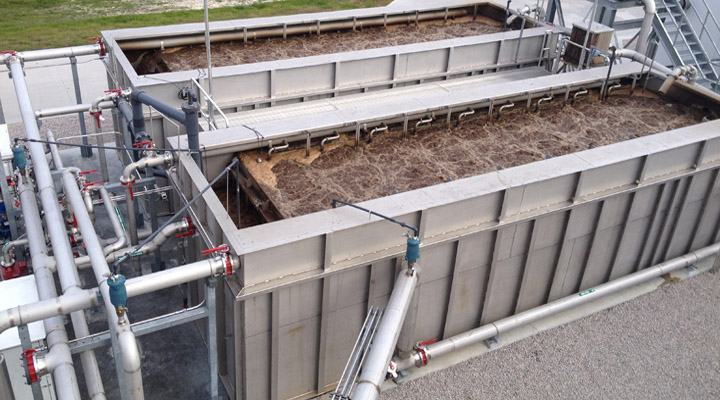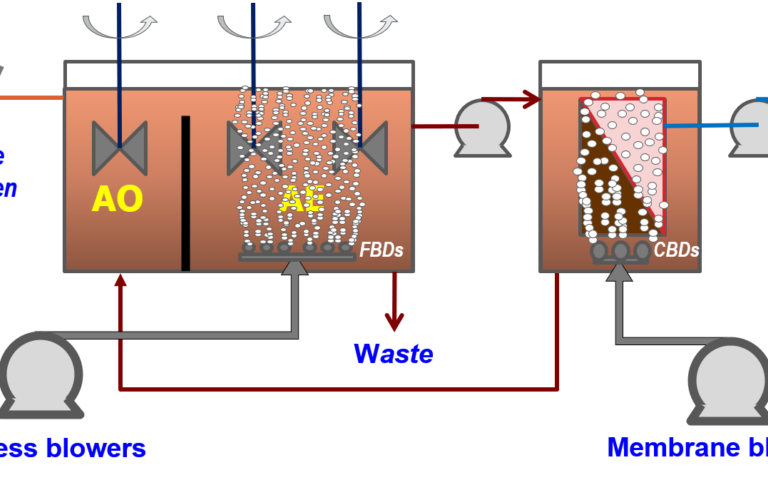How to Optimize Membrane Bioreactor Performance for Maximum Efficiency
Understanding Membrane Bioreactors: The Future of Wastewater Treatment
Membrane bioreactors (MBRs) stand for a noteworthy innovation in the field of wastewater treatment, incorporating biological procedures with advanced membrane layer purification to enhance effluent quality. As worldwide water scarcity and rigid governing frameworks become significantly pushing issues, MBR innovation supplies an effective reaction with its capacity to minimize footprint and enhance source healing.
What Are Membrane Layer Bioreactors?

The core elements of MBR systems consist of a bioreactor where microbial task takes place and a membrane layer device that filters the mixed liquor. This double capability makes it possible for the synchronised deterioration of organic matter and solid-liquid separation in a single step. MBRs can operate in both submerged and external configurations, with submerged systems being more common due to their portable layout and functional performance.
The fostering of MBR modern technology has actually obtained grip in numerous applications, varying from metropolitan wastewater therapy to commercial effluent management. MBRs are particularly advantageous in scenarios where space is restricted or rigid effluent quality standards should be satisfied. By preserving a high concentration of microorganisms within the bioreactor, MBRs improve the deterioration of organic pollutants, thereby generating greater therapy effectiveness compared to conventional approaches.
Key Benefits of MBR Modern Technology
The assimilation of biological treatment with membrane layer filtering in MBR systems uses many advantages that establish it aside from traditional wastewater therapy methods. Among the main advantages is the improved effluent top quality. MBRs successfully remove put on hold solids and virus, achieving higher degrees of filtration that meet rigorous discharge standards and facilitate water reuse applications.

Another considerable benefit is the lowered sludge production. MBR systems generate less excess sludge, bring about reduced disposal costs and a decrease in environmental effect. The closed nature of the membrane system reduces the danger of smell exhausts and boosts overall process control.
Lastly, MBRs are adaptable and versatile, making them appropriate for different wastewater types, including industrial and community sources. The capability to integrate with sophisticated treatment innovations additionally improves their efficiency, making MBRs an appealing option for the future of wastewater administration.
Difficulties and Limitations of MBRs
While MBR innovation uses many advantages, it likewise faces several challenges and constraints that can influence its prevalent fostering. One considerable difficulty is the high funding and operational prices linked with MBR systems. The first financial investment for membrane materials and the necessary framework can be significant, making it much less easily accessible for smaller municipalities or industries.
Furthermore, membrane fouling continues to be an essential problem that can decrease system performance and rise maintenance demands. Fouling takes place when solids, raw material, or microorganisms collect on the membrane surface area, causing minimized permeability and calling for regular cleaning or substitute.
One more limitation includes the complexity of the modern technology. MBR systems call for proficient personnel for procedure and maintenance, which can be an obstacle in regions with restricted technical proficiency. The disposal of invested membrane layers presents ecological concerns, as the materials are usually not naturally degradable and can add to squander monitoring challenges.
Finally, while MBRs can effectively treat a wide variety of wastewater, they might not be suitable for all applications, especially those with high focus of fats, oils, and greases, requiring more research and advancement to address these published here limitations.
Applications of Membrane Layer Bioreactors
In numerous industries, membrane layer bioreactors (MBRs) have become a flexible remedy for wastewater treatment (Membrane Bioreactor). Their applications cover local, industrial, and agricultural settings, showcasing their flexibility and performance in diverse atmospheres. In local wastewater treatment plants, MBRs dramatically enhance effluent high quality, permitting for water reuse and decreasing the ecological influence of released wastewater
Industrially, MBRs are used in food and beverage processing, textile production, and pharmaceutical manufacturing, where they properly deal with high-strength waste streams. Their capacity to go to this website take care of fluctuating loads and varying impurity focus makes them specifically beneficial in these sectors. Additionally, MBRs facilitate the removal of pathogens, suspended solids, and organic matter, adding to conformity with strict discharge regulations.
In agriculture, MBRs are increasingly used for treating farming drainage and animals wastewater, making it possible for the recuperation of nutrients for plant food production. They also help in the therapy of greywater for watering, advertising sustainable water monitoring methods.
The versatility of MBRs is more shown by their assimilation with other technologies, such as anaerobic food digestion and advanced oxidation procedures, improving overall efficiency and resource recovery in wastewater therapy systems.
The Future of Wastewater Treatment
Advancements in modern technology and a growing focus on sustainability are shaping the future of wastewater therapy. Membrane bioreactors (MBRs) exemplify this change by integrating organic treatment procedures with membrane filtering, resulting in high-grade effluent appropriate for reuse. The trend in the direction of circular economic situations is prompting centers to adopt MBRs for their capability to recover sources, such as water and nutrients, from wastewater.
Innovations in membrane products and setup are boosting the efficiency and durability of MBR systems, reducing functional prices and energy usage. Smart technology combination, consisting of real-time monitoring and automated control systems, is additional maximizing performance and allowing anticipating upkeep, thus lessening downtime.
Moreover, societal assumptions and governing pressures are pushing communities and sectors to embrace even more lasting techniques. Membrane Bioreactor. The shift towards decentralized wastewater treatment options is read the full info here obtaining grip, enabling localized treatment that minimizes transport prices and power usage
Verdict
Membrane bioreactors (MBRs) represent a transformative method to wastewater treatment, integrating biological processes with sophisticated membrane layer innovation. The benefits of MBRs, consisting of boosted effluent top quality, lowered spatial needs, and reduced sludge manufacturing, place them as a sensible remedy in the middle of expanding urbanization and more stringent ecological laws. Regardless of existing obstacles, the ongoing advancement in membrane layer materials and operational techniques promises to bolster the efficacy and fostering of MBRs, guaranteeing their crucial function in the future of sustainable wastewater administration.
Membrane bioreactors (MBRs) represent a noteworthy innovation in the area of wastewater therapy, integrating biological procedures with innovative membrane layer filtering to enhance effluent quality.Membrane layer bioreactors (MBRs) incorporate biological treatment processes with membrane layer filtering to efficiently deal with wastewater.The assimilation of biological treatment with membrane layer filtering in MBR systems offers numerous benefits that set it apart from traditional wastewater therapy techniques. Membrane bioreactors (MBRs) exhibit this shift by incorporating biological treatment procedures with membrane purification, resulting in top notch effluent appropriate for reuse.Membrane bioreactors (MBRs) stand for a transformative method to wastewater therapy, integrating organic processes with advanced membrane layer technology.